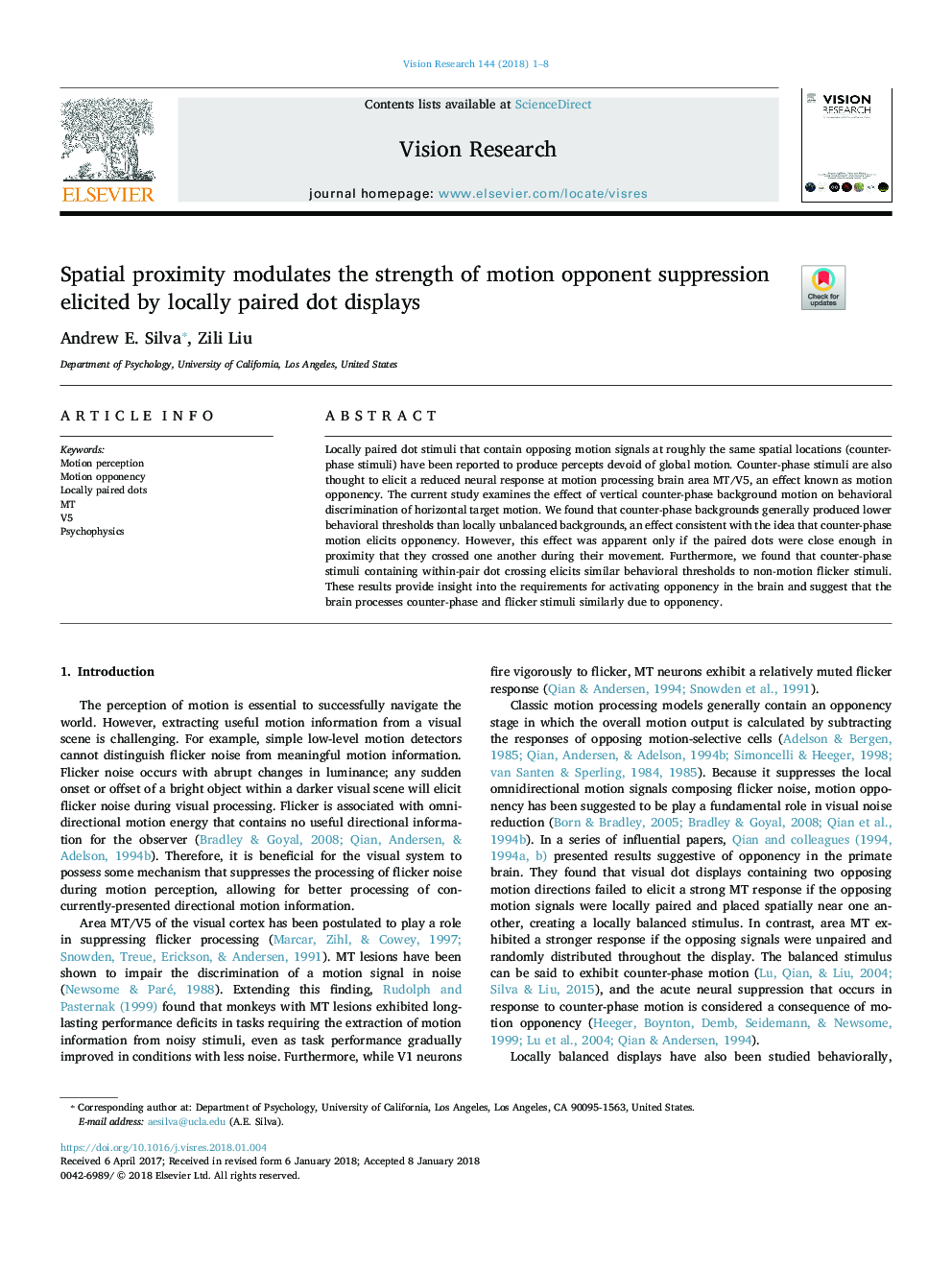| Article ID | Journal | Published Year | Pages | File Type |
|---|---|---|---|---|
| 8795315 | Vision Research | 2018 | 8 Pages |
Abstract
Locally paired dot stimuli that contain opposing motion signals at roughly the same spatial locations (counter-phase stimuli) have been reported to produce percepts devoid of global motion. Counter-phase stimuli are also thought to elicit a reduced neural response at motion processing brain area MT/V5, an effect known as motion opponency. The current study examines the effect of vertical counter-phase background motion on behavioral discrimination of horizontal target motion. We found that counter-phase backgrounds generally produced lower behavioral thresholds than locally unbalanced backgrounds, an effect consistent with the idea that counter-phase motion elicits opponency. However, this effect was apparent only if the paired dots were close enough in proximity that they crossed one another during their movement. Furthermore, we found that counter-phase stimuli containing within-pair dot crossing elicits similar behavioral thresholds to non-motion flicker stimuli. These results provide insight into the requirements for activating opponency in the brain and suggest that the brain processes counter-phase and flicker stimuli similarly due to opponency.
Related Topics
Life Sciences
Neuroscience
Sensory Systems
Authors
Andrew E. Silva, Zili Liu,
